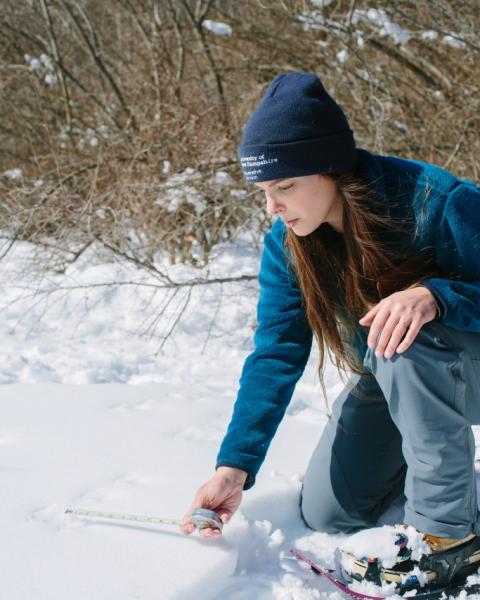Supplement to: “Field Trip 101: You CAN Lead a Guided Walk: A step-by-step guide to hosting the perfect field walk”
The following is adapted from the Project Learning Tree (PLT) pre-K through 8 curriculum guide. PLT is an award winning action-oriented curriculum that incorporates environmental lessons into all disciplines. NHPLT provides meaningful education to teachers and others who work with youth. If you are interested in inviting youth educators or children to visit a property, contact PLT to learn how to use the curriculum.
Project Learning Tree
54 Portsmouth Street
Concord, NH 03301
603-226-0160
FAX: 603-228-0423
e-mail: info@nhplt.org
Every opportunity a child has to learn in the outdoors has the potential to become an experience that will be remembered for many years. Treat every occasion as a special event. Taking students outdoors can be made easier with the help of parents or older students. Set up a meeting signal to get everyone together once you are outside, such as raising your hand, clapping several times, or using a bird call.
Discuss appropriate outdoor behavior. Examples of some rules are listed below:
- All living things, including plants, are to respected and not injured in any way.Follow the rule: look, learn, leave alone.
- Stay within the boundaries.
- Stay with a partner
- Be safe.
- Bring all equipment necessary. (You may not be able to return to call until the end of the activity.)
- Follow all directions. (Make sure your directions are clear and that all students understand.)
Before beginning the outdoor experience, briefly explain the activity. Next, let students complete the activity. As necessary, remind students of appropriate outdoor behavior. If many students are acting inappropriately, you may have to delay the activity. Go back to the classroom and try again the next day. Discuss appropriate behaviors that you or your students noticed.
Before (and maybe after) returning to the classroom, let students share their experiences. Then share your own experience in the outdoors.
Other tips:
- For the first several times that students study the outdoors, provide short, focused investigations. You might also gather students in a circle and read some literature books outside.
- If students are not following rules, consider having an adult take one or two groups out at a time to complete the task while the rest of the class works indoors.
- Being outside means playtime to some students. Be patient and allow students to practice appropriate behavior. Eventually students will get used to investigating the out-of-doors in an appropriate fashion.
- Let students choose a partner, then have students count off (They can record their number on their journal.) Whenever you need to make sure all are present, get the class together, and have the first pair begin counting.
Collecting Plants and Animals
There are several reasons to limit your collection of organisms:
- To model respect for all living things.
- To model that all organisms are best studied in their natural environment without interference from observers.
- To keep from impacting the organisms in an area, especially if many classes visit the same site.
- To avoid making the main focus of the activity collecting animals instead of understanding ecological concepts.
If you determine that you want the students to collect some organisms for closer observation, several recommendations are listed below:
- Never collect material from an area unless you have permission from the person or organization who owns the land. You may not collect any material from national or state parks.
- Never collect rare or endangered species.
- Never collect a plant if it’s the only one growing in a particular area. Instead, collect plants that are growing in groups or stands.
- Instruct students to minimize the number of organisms they collect.
- Take care when keeping living organisms in a container. Make the animal as comfortable as possible and provide for its basic needs.
- Place all containers away from direct sunlight.
- Provide items in the container under which the organisms can hide.
- If it is necessary to handle organisms, be gentle. Be aware that some animals might bite to protect themselves.
- If aquatic animals are collected, use water for the containers from the area where the organisms were found. If the water in the containers with aquatic animals becomes warm, replenish with cool fresh water.
- Return all organisms to the spot they were found as soon as the observations are complete.

